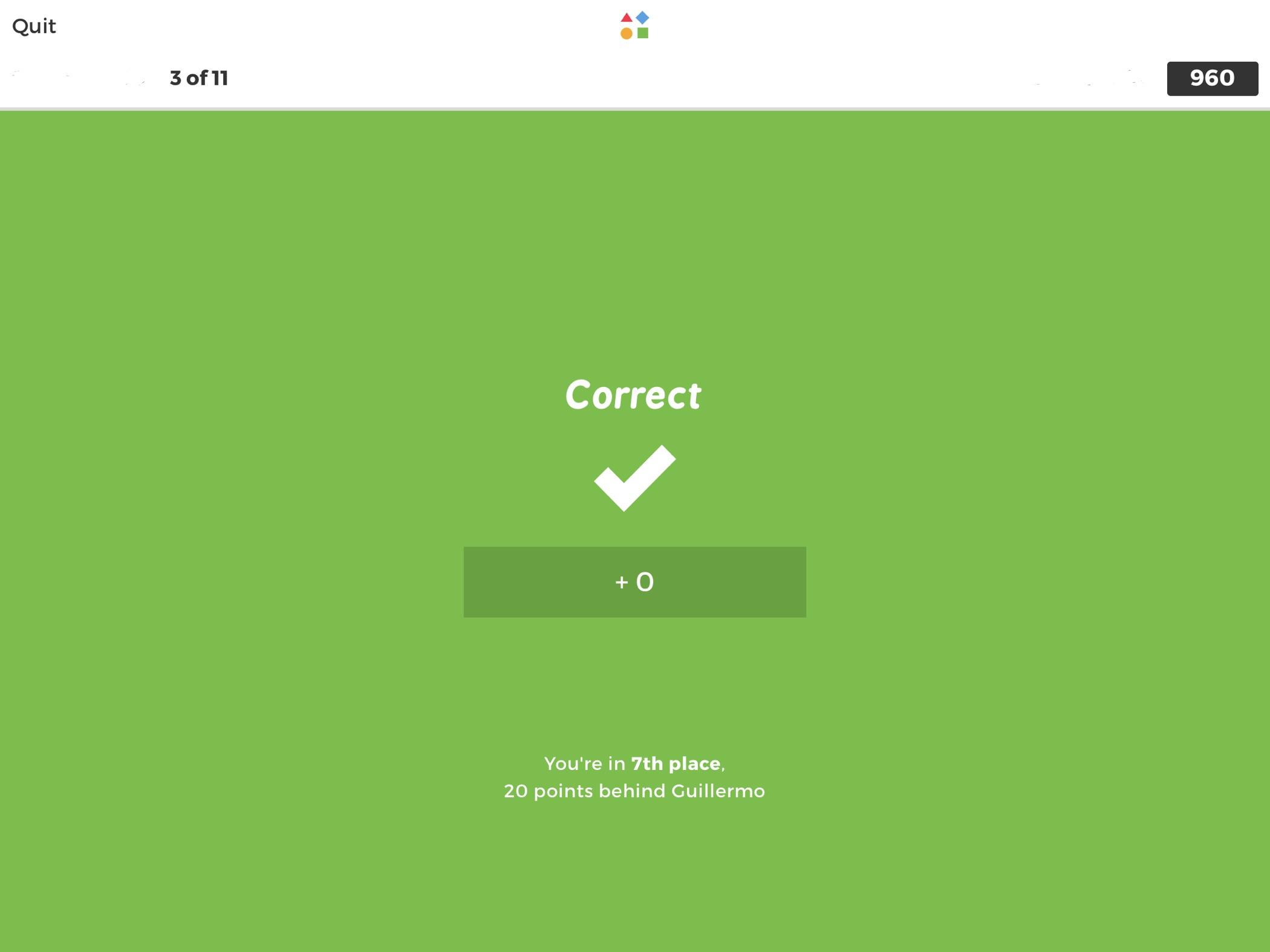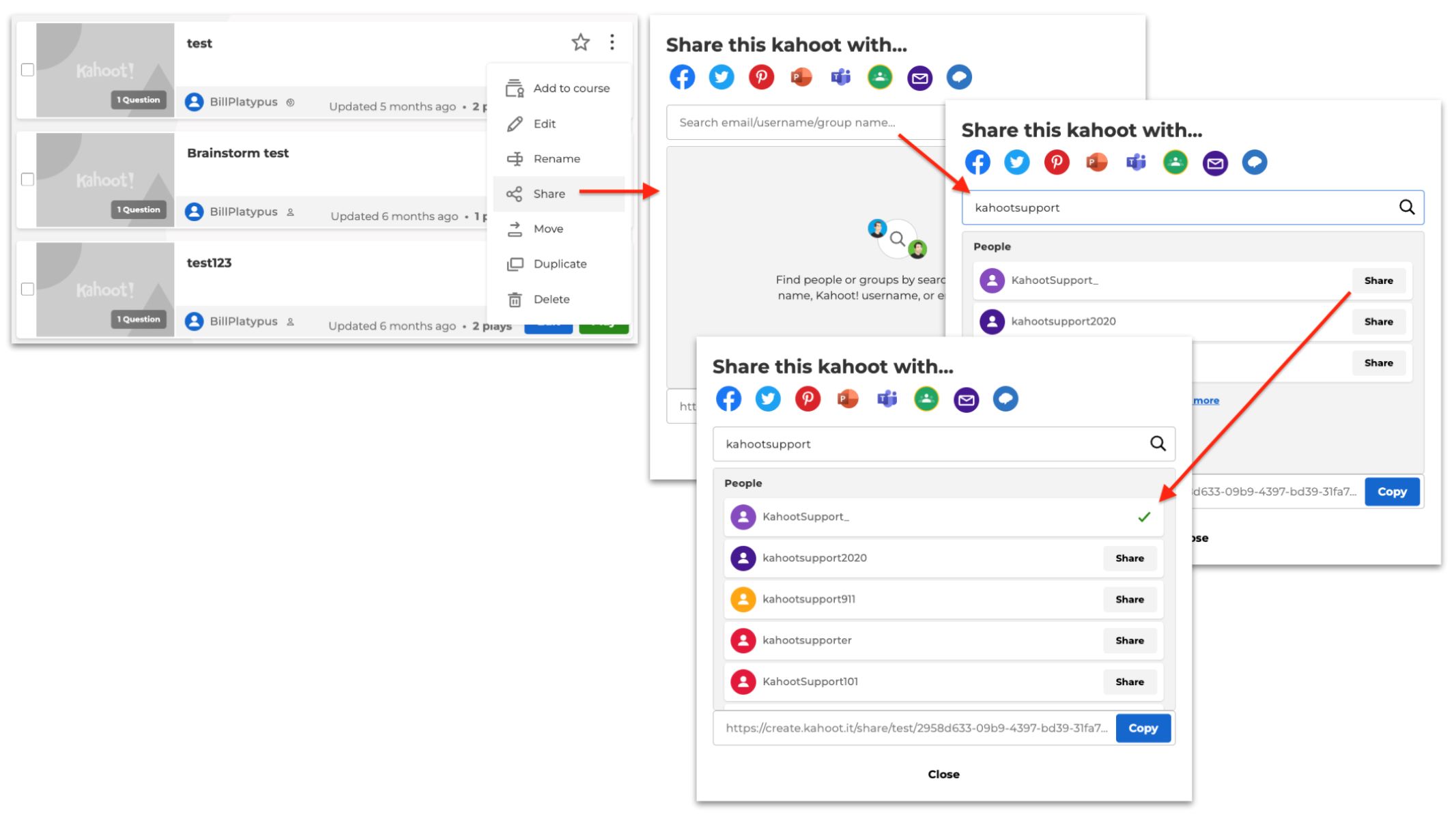Introduction
Are you ready to take your Kahoot game to the next level? Whether you’re a student looking to dominate in class or a trivia enthusiast aiming for the top of the leaderboard, getting good at Kahoot can give you a real edge. In this article, we’ll explore the art of becoming a Kahoot master. From understanding the game mechanics to developing winning strategies for different question types, we’ve got you covered.
Before we delve into the nitty-gritty, let’s first establish what Kahoot is. Created as an educational platform, Kahoot is a game-based learning tool that allows users to create, host, and participate in interactive quizzes and surveys. It’s designed to engage players with its colorful and dynamic interface, making learning fun and exciting.
So, why should you invest time and effort in mastering Kahoot? The answer is simple: it’s not just about getting high scores, but also about enhancing your knowledge and critical thinking skills. Kahoot challenges your cognitive abilities by testing your memory, quick thinking, and decision-making under pressure. It’s a powerful tool that can help you improve your academic performance, boost your competitive spirit, and even have some fun along the way.
Now that we’ve established the importance of getting good at Kahoot, let’s dive into the game mechanics. By understanding how Kahoot works, you’ll be able to maximize your performance and achieve impressive results. So, buckle up and get ready to become a Kahoot superstar!
What is Kahoot?
Kahoot is an interactive game-based learning platform that has gained popularity among teachers, students, and trivia enthusiasts alike. Founded in 2013, it provides a unique and engaging way to learn and quiz oneself on a wide range of topics.
At its core, Kahoot is a web-based application that allows users to create, host, and play interactive quizzes called “Kahoots.” These quizzes can be accessed on various devices, including computers, tablets, and smartphones, making it accessible to anyone with an internet connection.
One of the key features of Kahoot is its user-friendly interface, which combines vibrant colors, catchy music, and intuitive design to create an immersive learning experience. The visually appealing format captivates players, making the learning process enjoyable and exciting.
When a Kahoot session begins, players are presented with a unique PIN code that they use to join the game. They can compete against each other or collaborate as a team, depending on the game mode chosen by the host. Once the game starts, players are presented with questions on their devices and given a limited amount of time to answer.
One of the defining aspects of Kahoot is its emphasis on speed. Points are awarded not only based on correct answers, but also on how quickly players respond. This dynamic creates a sense of urgency and competition, adding an extra layer of excitement to the game.
In addition to quizzes, Kahoot also offers other interactive activities such as discussions, surveys, and challenges. These features provide a versatile learning platform that can be adapted to various educational needs and goals.
With its engaging format and versatile functionality, Kahoot has become a popular tool for educators to create interactive lessons, review materials, and assess student understanding. It’s also widely used for social gatherings, corporate training sessions, and even virtual trivia nights among friends and colleagues.
Now that you have a clearer understanding of what Kahoot is, let’s explore why it’s essential to get good at this game-based learning platform.
Why Should You Get Good at Kahoot?
Getting good at Kahoot goes beyond simply earning high scores or bragging rights. There are several compelling reasons why you should invest time and effort into honing your skills on this interactive learning platform.
First and foremost, Kahoot is not just a game – it’s an effective tool for enhancing your knowledge and critical thinking skills. By actively participating in quizzes and challenges, you engage your brain in a way that promotes memory retention and improves cognitive abilities. The interactive nature of Kahoot keeps you mentally stimulated, making learning a fun and enjoyable experience.
Another reason to get good at Kahoot is its educational value. Many teachers and educators use Kahoot as a teaching aid to reinforce lesson materials and assess student understanding. By mastering Kahoot, you can unlock its full potential as a learning tool, enabling you to excel academically and grasp concepts more effectively.
In addition to academic benefits, becoming skilled at Kahoot can also boost your competitiveness and social interaction. Whether you’re playing with classmates, friends, or colleagues, Kahoot encourages friendly competition and fosters a sense of camaraderie. By improving your performance, you can establish yourself as a Kahoot expert and build a reputation as the go-to person for trivia nights or study sessions.
Furthermore, being good at Kahoot can improve your confidence and self-esteem. As you consistently achieve high scores and surpass your previous achievements, you’ll feel a sense of accomplishment and pride. This positive reinforcement can translate into other areas of your life, empowering you to tackle challenges and set higher personal goals.
Additionally, Kahoot offers opportunities for growth and personal development. The platform provides a vast array of quizzes and challenges on various topics, allowing you to explore new interests and expand your knowledge base. Continuously engaging with Kahoot can help you become a more well-rounded individual with a broader understanding of the world around you.
Lastly, being good at Kahoot can simply be a lot of fun! The fast-paced nature of the game, coupled with the thrill of competition, creates an exciting and enjoyable experience. Whether you’re playing on your own or with a group, Kahoot brings a sense of entertainment and engagement that can liven up any learning or social gathering.
Now that we’ve explored the reasons why getting good at Kahoot is worthwhile, let’s dive into the game mechanics and strategies that will help you excel in this interactive learning platform.
Understanding the Game Mechanics
To become a master of Kahoot, it is crucial to have a solid understanding of its game mechanics. By familiarizing yourself with how the game works, you can maximize your performance and achieve better results.
First, let’s talk about the basics. Kahoot is a quiz-style game that tests your knowledge on various topics. It consists of multiple-choice questions, with each question accompanied by four possible answer options. The objective is to select the correct answer within the given time limit.
An essential aspect of Kahoot is the emphasis on speed. Points are awarded not only for answering correctly but also for the speed of your response. The faster you answer correctly, the more points you earn. This adds an exciting element of competition and encourages quick thinking.
As a player, it’s important to pay attention to the question and the answer options. Read each question carefully and consider all the possibilities before making your selection. Sometimes, answers may be designed to trick you, so stay focused and avoid rushing through the questions.
In addition to individual play, Kahoot also offers team play options, where players can collaborate during the game. In team play mode, players work together to answer questions and earn points collectively. This mode allows for a cooperative and inclusive game experience, fostering teamwork and collaboration.
Understanding power-ups is another key aspect of Kahoot game mechanics. Power-ups are special tools or features that can give you an advantage during gameplay. For example, the “Double Points” power-up doubles the points earned for a correct answer, while the “Bomb” power-up deducts points from other players’ scores. Knowing when and how to use these power-ups strategically can greatly boost your chances of success.
Kahoot also offers various game modes to add variety and challenge. Classic mode is the standard Kahoot gameplay, where players aim to achieve the highest score. In addition, there are game modes like “Jumble,” where players have to put answer options in the correct order, and “Survey,” where players can express their opinions on a particular topic. Exploring these different game modes can enhance your overall experience and broaden your Kahoot skills.
Now that you have a better understanding of the game mechanics, it’s time to delve into specific strategies and tips that will help you answer questions quickly and accurately. Stay tuned for the next sections where we will cover these techniques in detail.
Tips for Quick Answering
In Kahoot, speed is of the essence. Quick and accurate answering can give you a significant advantage over other players. Here are some tips to help you improve your speed and increase your chances of success:
- Stay focused: Pay close attention to each question and read all the answer options before making your selection. Avoid being distracted and maintain your concentration throughout the game.
- Trust your instincts: Sometimes, the first answer that comes to mind is the correct one. Trust your intuition and go with your gut feeling rather than overthinking the options.
- Eliminate incorrect options: If you’re unsure about the correct answer, try to eliminate the obviously wrong choices first. This narrows down the possibilities and increases your chances of selecting the right answer.
- Practice makes perfect: Regularly engaging in Kahoot quizzes and challenges helps you become familiar with the question formats and increases your response time. The more you practice, the quicker you’ll become at processing and answering questions.
- Know the question order: Understand that the order in which the questions appear might not necessarily match the difficulty level. Some quizzes may start with easier questions and progressively become more challenging. Anticipate this pattern and adjust your speed accordingly.
- Keep an eye on the timer: The time limit for answering each question is displayed on the screen. Be mindful of the remaining time and answer as quickly as possible without sacrificing accuracy.
- Use keyboard shortcuts: If playing on a computer, familiarize yourself with keyboard shortcuts to expedite the answering process. For multiple-choice questions, you can use the number keys (1, 2, 3, 4) to select your answer instead of using the mouse.
- Be strategic with power-ups: If power-ups are enabled in the game, use them strategically. Activate power-ups that can boost your score or hinder your opponents at the right moments to gain an advantage.
By incorporating these tips into your Kahoot strategies, you can become more proficient at answering questions quickly and accurately. Now, let’s move on to mastering the different question types in Kahoot.
Mastering Question Types
Kahoot offers a variety of question types, each requiring different approaches and strategies. By understanding and mastering these question types, you can improve your performance and increase your chances of getting correct answers. Here are the main question types you’ll encounter in Kahoot:
- Multiple Choice: In multiple-choice questions, you’ll be presented with a question and several answer options. Carefully read the question and evaluate each option before selecting your answer. When answering, eliminate obviously incorrect options and choose the one that best fits the question.
- True or False: True or false questions may seem straightforward, but they can still trip you up if you’re not careful. Read the statement carefully and look for any keywords that may indicate its accuracy. Remember, even if parts of the statement are true, if any part is false, the whole statement is false.
- Fill in the Blanks: Fill in the blank questions require you to complete a sentence or phrase with the missing word(s). Pay attention to the context of the sentence and use any provided clues to help you fill in the correct answer. Make sure to consider grammar and spelling rules to ensure accuracy.
- Image-based Questions: In some Kahoot quizzes, questions may feature images or visuals as part of the question or answer options. Pay close attention to any visual cues and examine the details before making your selection.
- Matching: Matching questions involve pairing items from two separate lists. Carefully read the instructions and take the time to match the items correctly. Start by matching the items you are absolutely certain about, then work on finding logical connections between the remaining options.
When faced with these different question types, it’s important to adapt your approach accordingly. Stay focused, read each question carefully, and take your time to evaluate all available options before selecting your answer. Practicing with different question types will enhance your ability to recognize patterns and find the correct answers more efficiently.
Now that you have a solid understanding of the various question types in Kahoot, let’s explore specific strategies for each type to help you excel in answering correctly.
Developing Strategies for Multiple Choice Questions
Multiple-choice questions are a common type in Kahoot quizzes, requiring you to choose the correct answer from a set of options. To excel in answering multiple-choice questions, it’s essential to develop effective strategies. Here are some strategies to help you improve your performance:
- Read the question carefully: Take your time to understand the question and identify the key information or keywords. This will guide you in evaluating the answer options more effectively.
- Eliminate obviously incorrect options: Scan through the answer options and eliminate any that are clearly incorrect or inconsistent with the question. This narrows down the options and increases your chance of selecting the correct answer.
- Consider all answer options before selecting: Even if you think you’ve found the right answer, make sure to evaluate all the options before making your selection. Sometimes, a better answer choice may be available, so don’t rush through the options.
- Look for clue words: Pay attention to clue words or phrases that may be present in the question or answer options. These clue words can help you identify the correct answer or eliminate incorrect options. Examples of clue words include “always,” “never,” “most,” or “least.”
- Use the process of elimination: If you’re uncertain about the correct answer, use the process of elimination. Start by eliminating the options that are clearly wrong or don’t align with the question. This increases your chances of selecting the correct answer from the remaining options.
- Consider context and reasoning: Analyze the context of the question and think critically about the topic or subject matter. Use your reasoning skills to deduce the most logical and plausible answer based on the information provided.
- Beware of trick options: Some multiple-choice questions may include answer options that are designed to confuse or mislead you. Be cautious and carefully evaluate each option to avoid falling into these pitfalls.
- Practice with sample questions: To improve your performance in multiple-choice questions, practice with sample questions and quizzes. Familiarize yourself with the question formats and develop a systematic approach that works best for you.
By incorporating these strategies into your Kahoot gameplay, you’ll be better equipped to choose the correct answer from multiple-choice options. Remember to stay focused, read the questions carefully, and evaluate all available options before making your selection.
Next, we’ll explore proven techniques for answering true or false questions in Kahoot.
Proven Techniques for True or False Questions
True or false questions are a common type in Kahoot quizzes, requiring you to determine whether a statement is true or false. To improve your performance in answering true or false questions, it’s important to follow proven techniques and strategies. Here are some techniques to help you excel:
- Read the statement carefully: Take your time to read the statement thoroughly and understand its meaning. Pay attention to every word and consider its implications.
- Identify keywords: Look for keywords or phrases that can provide a clue to the accuracy of the statement. These keywords can help you determine whether the statement is likely to be true or false.
- Consider the context: Analyze the context of the statement and evaluate it based on your knowledge of the topic. Consider any facts or information that you know to be true or false, and use that knowledge to make an informed decision.
- Avoid absolute language: Be cautious with statements that contain absolute language such as “always” or “never.” These statements are more likely to be false, as there are often exceptions or variations in most situations.
- Look for qualifiers: Look for words that indicate limitations or exceptions, such as “usually,” “sometimes,” or “often.” These qualifiers can provide insights into the accuracy of the statement.
- Consider logical reasoning: Use your logical reasoning skills to evaluate the statement. Does the statement align with your understanding of the topic? Does it make logical sense based on what you know?
- Avoid making assumptions: Base your decision solely on the information provided in the statement. Avoid making assumptions or bringing in any additional knowledge that is not explicitly mentioned in the question.
- Double-check negatives: Be cautious when dealing with negative statements. Make sure to read and evaluate them carefully, as they can easily be misinterpreted.
- Practice with sample questions: To improve your performance in answering true or false questions, practice with sample quizzes or questions specifically designed for this question type. This will help you familiarize yourself with different patterns and enhance your decision-making abilities.
By applying these techniques and strategies, you can approach true or false questions in a more systematic and confident manner. Take your time, read the statements carefully, and evaluate them based on the context and knowledge you have. Remember, practice is key, so keep honing your skills by participating in Kahoot quizzes and improving your accuracy in this question type.
Next, let’s explore helpful techniques for answering fill in the blanks questions in Kahoot.
Hacks for Fill in the Blanks Questions
Fill in the blanks questions in Kahoot require you to complete a sentence or phrase by filling in the missing word(s). These types of questions can be challenging, but with the right hacks and strategies, you can improve your accuracy and boost your performance. Here are some hacks for tackling fill in the blanks questions:
- Read the entire sentence: Start by reading the entire sentence or phrase to get a sense of its meaning and context. Understanding the context will help you choose the most appropriate word to fill in the blank.
- Look for context clues: Analyze the surrounding words and phrases in the sentence for any clues that can help you infer the missing word(s). Look for grammatical cues, such as verb tense or subject-verb agreement, and use them to guide your choice.
- Use logic and common sense: Use your logical reasoning skills and common sense to determine the most suitable word for the blank. Consider the overall meaning of the sentence and select a word that fits logically and makes the sentence grammatically correct.
- Consider the part of speech: Pay attention to the part of speech that is required in the blank space. Is it a noun, a verb, an adjective, or an adverb? This will help you choose a word that fits grammatically and semantically.
- Look for word associations: Look for words or phrases in the sentence that are semantically connected to the missing word. This association can give you a clue about the type of word you should choose to fill in the blank.
- Consider verb forms or tense: If the sentence requires a verb in the blank space, pay attention to the verb forms or tense used in the surrounding words. Ensure that the verb you choose matches the tense and form required by the context.
- Use process of elimination: If you’re unsure about the correct word, try eliminating the options that are clearly incorrect or do not make sense in the given context. This narrows down the possibilities and increases your chances of selecting the right answer.
- Practice with sentence completion: Enhance your skills in fill in the blanks questions by practicing with sentence completion exercises. This will help you become more familiar with common sentence structures and improve your ability to choose the appropriate words in different contexts.
By utilizing these effective hacks, you can approach fill in the blanks questions with confidence and accuracy. Remember to read the entire sentence, analyze the context, and choose the word that best completes the meaning and structure of the sentence. Keep practicing and refining your skills to become a mastery of fill in the blanks questions.
Now, let’s explore advanced tactics for different game modes in Kahoot.
Bonus: Advanced Tactics for Game Modes
While Kahoot’s classic mode is the most commonly played game mode, there are additional modes that offer unique gameplay and challenges. To truly master Kahoot, it’s essential to familiarize yourself with these game modes and develop advanced tactics. Here are some advanced tactics for different game modes:
1. Jumble:
In Jumble mode, the answer options are presented in a random order, and players must rearrange them correctly. To excel in Jumble mode, try these tactics:
- Read the question and answer options carefully, noting any keywords or phrases that indicate the correct order.
- Start by identifying any fixed or sequential information that can help you determine the correct order.
- Create a mental or physical visual representation of the correct order to assist you in rearranging the options.
- Practice with sample Jumble questions to improve your ability to quickly identify and arrange the correct order.
2. Survey:
In Survey mode, players express their opinions on various topics. Although there are no right or wrong answers, these tactics can help you make the most of the game:
- Read each survey question carefully and critically think about your opinion before selecting your response.
- Consider the context and purpose of the survey question. Choose answers that align with your true thoughts and feelings on the given topic.
- Be aware of any time constraints and avoid rushing through the survey questions. Take the time to provide thoughtful and genuine responses.
- Use the opportunity to engage with other players and stimulate discussions based on the survey results.
3. Team Mode:
In Team mode, players work together to answer questions and earn points collectively. To excel in Team mode, consider the following tactics:
- Communicate effectively with your teammates to ensure a coordinated and efficient approach to answering questions.
- Distribute the workload among team members, with each player taking responsibility for specific question categories or topics they are most knowledgeable about.
- Utilize the chat or messaging feature within the game to discuss possible answers or seek clarification on certain questions.
- Encourage collaboration and active participation among team members, fostering a supportive and motivating team dynamic.
By implementing these advanced tactics for different game modes, you’ll be able to excel in Kahoot beyond the classic mode. Remember to adapt your strategies according to the specific challenges and objectives of each game mode.
Now that you have a comprehensive guide to becoming a Kahoot master, go out there and put your newfound knowledge into action. Practice, strategize, and enjoy the exhilaration of climbing to the top of the Kahoot leaderboard!
Conclusion
Congratulations! You’re now equipped with the knowledge and tactics to become a Kahoot master. From understanding the game mechanics and developing strategies for different question types to utilizing advanced tactics in various game modes, you have gained valuable insights into how to excel in Kahoot.
Remember, getting good at Kahoot is not just about earning high scores or winning games. It’s about enhancing your knowledge, critical thinking skills, and competitive spirit. Kahoot offers a dynamic and interactive learning experience that can make education fun and engaging.
By following the tips and strategies outlined in this article, you can increase your speed in answering questions, master different question types, and adapt to the challenges presented in various game modes. Practice is key, so keep participating in Kahoot quizzes, challenge yourself with sample questions, and refine your skills.
Whether you’re a student aiming to outshine your classmates or a trivia enthusiast looking to dominate the leaderboard, Kahoot provides the perfect platform to test your knowledge and have a great time. So, embrace the excitement, play strategically, and watch your Kahoot skills improve.
Now, it’s time to put your knowledge into action. Join a Kahoot session, challenge your friends or colleagues, and showcase your expertise. Enjoy the thrill of competition, the joy of learning, and the satisfaction of becoming a Kahoot master!

























